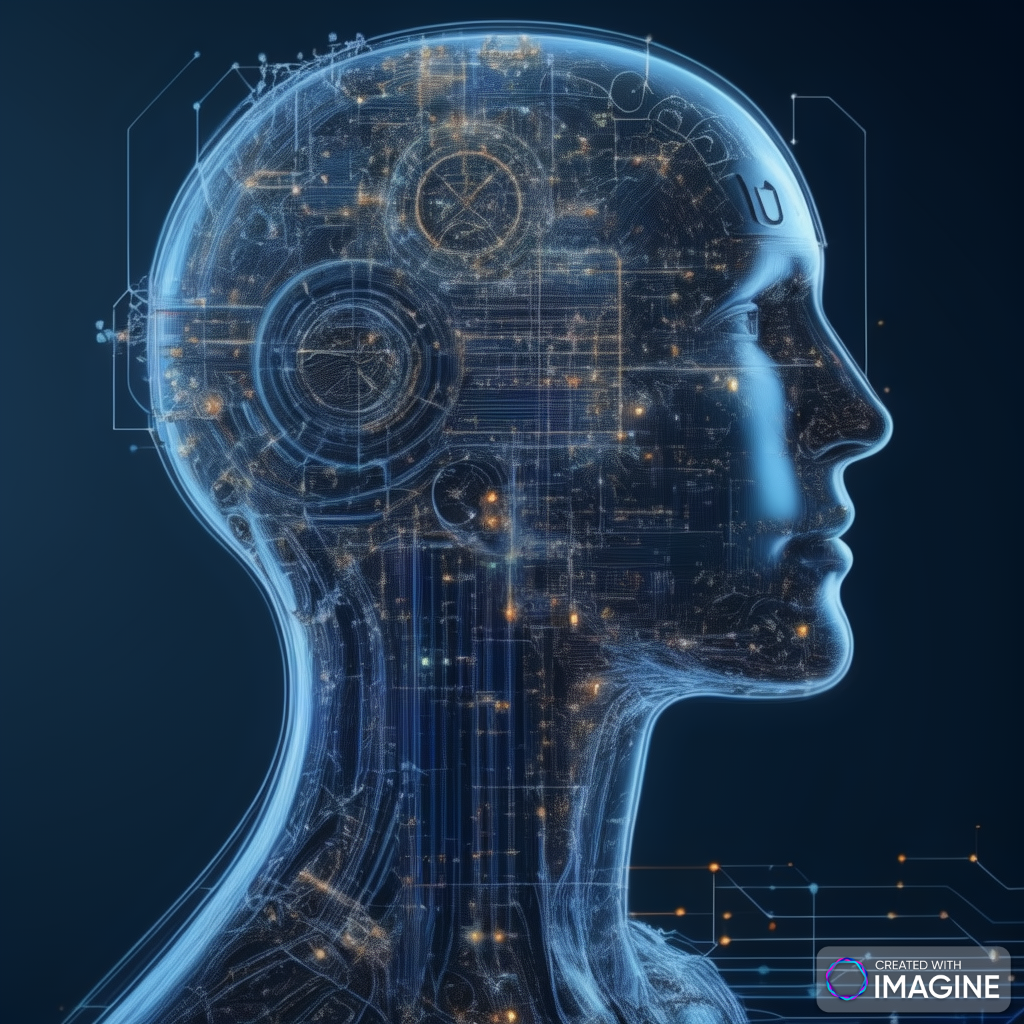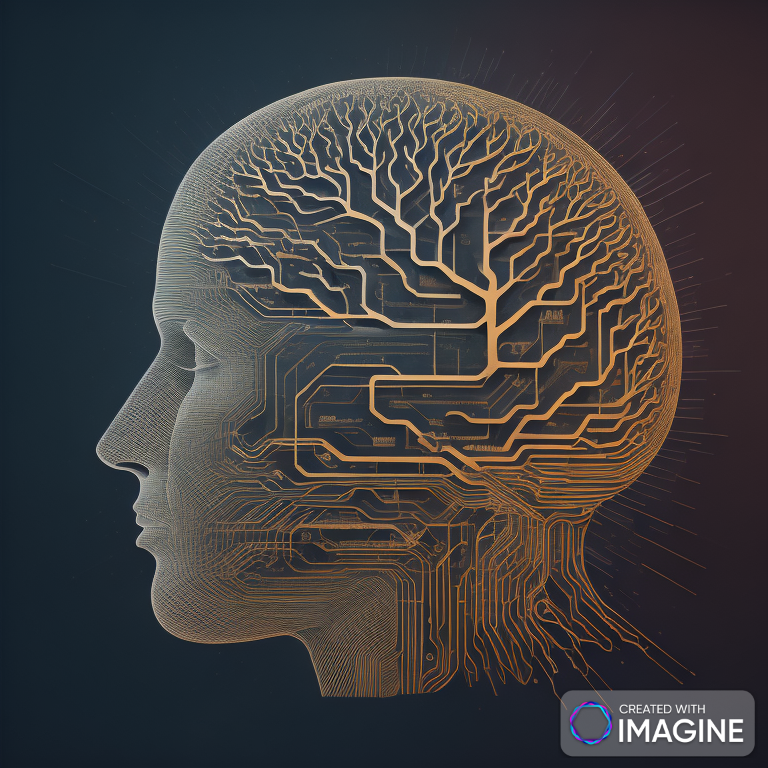Neural Nets and Neural Networks in AI/ML
Introduction
Artificial Intelligence (AI) and Machine Learning (ML) have become essential technologies in various fields, transforming how we solve problems and make decisions. At the heart of many AI and ML systems are neural networks, inspired by the human brain’s structure and function. This blog post delves into the world of neural nets and neural networks, exploring their mechanisms, applications, and future potential.
Artificial Intelligence (AI) and Machine Learning (ML) have dramatically evolved, transforming numerous industries and our everyday lives. Central to this revolution are neural networks, complex computational models inspired by the workings of the human brain. This blog post delves into neural networks’ intricacies, their varied applications, and future potential.
Fundamentals of Neural Networks
Defining Neural Networks
 are sophisticated algorithms designed to recognize patterns and solve complex problems. Modeled after the human brain, they consist of interconnected layers of artificial neurons, processing data through a series of transformations.
are sophisticated algorithms designed to recognize patterns and solve complex problems. Modeled after the human brain, they consist of interconnected layers of artificial neurons, processing data through a series of transformations.
Core Components of Neural Networks
- Input Layer:
- Receives the initial data.
- Each neuron in this layer represents a specific feature of the input.
- Hidden Layers:
- Perform intermediate computations and transformations.
- These layers contain neurons that capture intricate patterns and representations.
- Output Layer:
- Delivers the final predictions or classifications.
- The structure of this layer depends on the specific task, such as regression or classification.
- Weights and Biases:
- Neurons are interconnected with weights that define the strength of these connections.
- Bias terms allow the model to fit the data more flexibly.
Varieties of Neural Networks
Deep Neural Networks (DNN)
- Architecture:
- Multiple hidden layers between the input and output.
- Applications:
- Complex tasks like image recognition and natural language processing.
Autoencoders
- Function:
- Learn efficient representations of data, typically for dimensionality reduction.
- Applications:
- Data compression, noise reduction, and feature learning.
Transformer Networks
- Structure:
- Leverage attention mechanisms to handle sequence data more effectively than RNNs.
- Applications:
- Language translation, text generation, and advanced NLP tasks.
Capsule Networks
- Innovation:
- Maintain hierarchical relationships within data.
- Applications:
- Image recognition with improved robustness to distortions.
Training and Optimization
Forward Propagation
- Process:
- Data flows from the input layer through hidden layers to the output.
- Each neuron applies a transformation to the data.
Loss Functions
- Purpose:
- Quantify the difference between predicted and actual outcomes.
- Common types include Mean Absolute Error (MAE) for regression and Hinge Loss for binary classification.
Backpropagation
- Mechanism:
- Errors are propagated backward through the network.
- Gradients of the loss function are computed with respect to each weight.
Optimization Algorithms
- Stochastic Gradient Descent (SGD):
- Updates weights incrementally using small batches of data.
- Adam:
- An adaptive learning rate optimization algorithm, often faster and more effective.
Activation Functions
- Leaky ReLU:
- Addresses the dying ReLU problem by allowing a small, non-zero gradient when the unit is not active.
- Swish:
- A newer function proposed by Google, defined as f(x)=x⋅sigmoid(x)f(x) = x \cdot \text{sigmoid}(x)f(x)=x⋅sigmoid(x), often outperforming ReLU in practice.
Real-World Applications
- Healthcare:
- Predictive diagnostics, personalized treatment recommendations, and robotic surgery.
- Finance:
- Automated trading systems, credit scoring, and market sentiment analysis.
- Retail:
- Customer behavior prediction, personalized recommendations, and inventory management.
- Agriculture:
- Crop health monitoring, yield prediction, and automated farming practices.
- Manufacturing:
- Predictive maintenance, quality control, and automation of complex production processes.
Introduction to Neural Network Variants
Convolutional Neural Networks (CNNs)
- Specialization:
- Designed for processing grid-like data, such as images.
- Structure:
- Convolutional layers extract features using filters that scan the image.
- Pooling layers reduce spatial dimensions, preserving important features.
- Applications:
- Image and video recognition, object detection, and facial recognition.
Recurrent Neural Networks (RNNs)
- Capability:
- Handle sequential data where previous inputs influence the output.
- Structure:
- Possess internal memory to retain information from previous steps.
- Applications:
- Time series forecasting, speech recognition, and text generation.
Advanced Techniques in Neural Network Training
Dropout
- Purpose:
- Prevents overfitting by randomly dropping neurons during training.
- Benefit:
- Forces the network to generalize better by not relying on specific neurons.
Batch Normalization
- Function:
- Normalizes inputs of each layer to improve training stability and speed.
- Outcome:
- Reduces internal covariate shift and accelerates convergence.
Activation Functions in Detail
Softmax
- Use Case:
- Converts logits to probabilities, often used in the output layer of classification tasks.
- Mechanism:
- Ensures the sum of output probabilities is 1, aiding in multi-class classification.
Tanh
- Range:
- Outputs values between -1 and 1, centered around zero.
- Advantage:
- Can better handle negative inputs compared to sigmoid.
Loss Functions
Cross-Entropy Loss
- Application:
- Commonly used in classification problems.
- Purpose:
- Measures the difference between the predicted probability distribution and the actual distribution.
Mean Squared Error (MSE)
- Application:
- Primarily used in regression tasks.
- Purpose:
- Measures the average squared difference between predicted and actual values.
Optimization Techniques
Momentum
- Concept:
- Accelerates gradient descent by taking into account past gradients.
- Benefit:
- Helps in navigating the cost surface more effectively, especially in the presence of oscillations.
AdaGrad
- Feature:
- Adjusts the learning rate based on the frequency of parameter updates.
- Outcome:
- Provides larger updates for infrequent and smaller updates for frequent parameters.
Enhancing Neural Network Performance
Hyperparameter Tuning
- Parameters:
- Learning rate, batch size, number of layers, and number of neurons per layer.
- Methods:
- Grid search, random search, and Bayesian optimization to find optimal settings.
Regularization Techniques
- L2 Regularization:
- Adds a penalty proportional to the square of the weights to the loss function.
- Benefit:
- Prevents overfitting by discouraging large weights.
Advanced Architectures
Generative Adversarial Networks (GANs)
- Components:
- Consist of a generator and a discriminator network in a competitive setup.
- Applications:
- Image generation, style transfer, and data augmentation.
Self-Organizing Maps (SOMs)
- Concept:
- Unsupervised learning algorithm that produces a low-dimensional representation of input data.
- Applications:
- Data visualization, clustering, and dimensionality reduction.
Real-World Implementations
Autonomous Vehicles
- Systems:
- Use a combination of CNNs for object detection and RNNs for decision-making.
- Advancements:
- Enable real-time decision-making and environment interaction for self-driving cars.
Personalized Medicine
- Approach:
- Leverage neural networks to predict individual responses to treatments.
- Impact:
- Enhances precision in medical treatments and drug development.
Future Prospects and Ethical Considerations
Edge AI
- Trend:
- Deploying neural networks on edge devices to perform real-time analytics without relying on cloud infrastructure.
- Benefit:
- Reduces latency and increases privacy and security.
Neuromorphic Computing
- Innovation:
- Designing hardware that mimics the neural structure of the brain.
- Potential:
- Achieves higher efficiency and faster processing for neural networks.
Ethical and Societal Impacts
Bias and Fairness
- Challenge:
- Ensuring neural networks do not perpetuate existing biases present in training data.
- Solution:
- Implementing fairness-aware algorithms and diverse datasets.
Privacy Concerns
- Risk:
- Potential misuse of personal data by neural networks.
- Mitigation:
- Developing robust data protection mechanisms and ethical guidelines.
Emerging Trends and Future Directions
Quantum Neural Networks
- Potential:
- Utilize quantum computing to solve problems intractable for classical computers.
- Applications:
- Cryptography, complex optimization problems, and advanced AI.
Brain-Computer Interfaces (BCI)
- Innovation:
- Direct communication between the brain and external devices.
- Applications:
- Assistive technologies for disabilities, cognitive enhancement, and new forms of interaction.
Explainable AI (XAI)
- Objective:
- Develop models whose decisions can be easily understood and trusted by humans.
- Techniques:
- Model transparency, interpretable models, and post-hoc explanations.
Future Applications
- Environmental Science:
- Predicting climate change impacts, monitoring ecosystems, and optimizing resource usage.
- Space Exploration:
- Autonomous navigation of spacecraft, analysis of extraterrestrial data, and habitat construction.
- Education:
- Personalized learning paths, intelligent tutoring systems, and administrative efficiency.
- Human Enhancement:
- Cognitive augmentation, mood regulation, and physical enhancements through AI-driven biotechnology.
Understanding Neural Networks
Basic Structure of Neural Networks
- Input Layer:
- Receives the raw data.
- Each node represents a feature of the input data.
- Hidden Layers:
- Intermediate layers that transform the input into something the output layer can use.
- Nodes in these layers are called hidden neurons.
- The number of hidden layers and neurons can vary depending on the complexity of the task.
- Output Layer:
- Produces the final output of the network.
- The number of nodes in the output layer depends on the type of task (e.g., classification, regression).
- Weights and Biases:
- Connections between neurons have associated weights that determine the strength of the connection.
- Biases are added to the neurons to provide additional flexibility in the model.
Types of Neural Networks
Feedforward Neural Networks (FNN)
- Structure:
- Information moves in one direction, from input to output.
- No cycles or loops.
- Applications:
- Simple tasks like image recognition and basic classification problems.
Convolutional Neural Networks (CNN)
- Structure:
- Designed to process grid-like data, such as images.
- Use convolutional layers to automatically and adaptively learn spatial hierarchies of features.
- Applications:
- Image and video recognition, object detection, and computer vision tasks.
Recurrent Neural Networks (RNN)
- Structure:
- Designed to handle sequential data.
- Neurons have connections to previous layers, allowing them to maintain memory of previous inputs.
- Applications:
- Natural language processing, time series prediction, and speech recognition.
Long Short-Term Memory Networks (LSTM)
- Structure:
- A special type of RNN designed to handle long-term dependencies.
- Use memory cells to store information over long periods.
- Applications:
- Similar to RNNs but with better performance on tasks requiring long-term memory.
Training Neural Networks
The Learning Process
- Forward Propagation:
- Input data is passed through the network layer by layer.
- Each neuron performs a weighted sum of inputs and applies an activation function to produce an output.
- Loss Function:
- Measures the difference between the predicted output and the actual target.
- Common loss functions include Mean Squared Error (MSE) for regression tasks and Cross-Entropy Loss for classification tasks.
- Backpropagation:
- The loss is propagated back through the network.
- Weights and biases are adjusted to minimize the loss.
- Gradient Descent and its variants (e.g., Stochastic Gradient Descent, Adam) are used to update the weights.
Activation Functions
- Sigmoid:
- Squeezes input values to be between 0 and 1.
- ReLU (Rectified Linear Unit):
- Outputs the input directly if positive, otherwise, it outputs zero.
- Tanh:
- Squeezes input values to be between -1 and 1.
- Softmax:
- Converts logits to probabilities, used in the output layer of classification networks.
Applications of Neural Networks
- Computer Vision:
- Image classification, object detection, facial recognition, and medical image analysis.
- Natural Language Processing (NLP):
- Language translation, sentiment analysis, chatbots, and speech recognition.
- Autonomous Systems:
- Self-driving cars, drones, and robots that can navigate and interact with their environment.
- Healthcare:
- Predictive analytics, personalized treatment plans, and diagnostic tools.
- Finance:
- Fraud detection, algorithmic trading, and risk assessment.
The Future of Neural Networks
Advancements and Research
- Deep Learning:
- As computational power increases, deep learning models with more layers and neurons become feasible.
- Neuromorphic Computing:
- Designing hardware that mimics neural networks, leading to more efficient and faster processing.
- Explainable AI:
- Developing methods to interpret and understand neural network decisions, making AI systems more transparent and trustworthy.
Potential Applications
- AI in Healthcare:
- Improved diagnostic tools, personalized medicine, and advanced medical research.
- Smart Cities:
- Optimized traffic management, energy-efficient systems, and enhanced public safety.
- Environmental Monitoring:
- Predicting natural disasters, monitoring climate change, and optimizing resource usage.
Conclusion
Neural networks have revolutionized AI and ML, enabling breakthroughs in various fields. As research continues and technology advances, the potential applications of neural networks are limitless. By understanding the mechanisms, types, and training processes of neural networks, we can appreciate their current capabilities and anticipate their future impact on society.
Neural networks have become a cornerstone of modern AI and ML, driving innovations across diverse fields. As research and technology advance, these powerful models will continue to unlock new possibilities, transforming industries and enhancing human capabilities. The journey is ongoing, with future discoveries and inventions poised to push the boundaries of what neural networks can achieve.
Neural networks are at the forefront of AI and ML advancements, driving significant progress across various domains. As we continue to explore their capabilities and refine their architectures, neural networks will undoubtedly play an even more critical role in shaping the future. The potential applications are vast, and the journey to fully understanding and leveraging these powerful models is just beginning.







